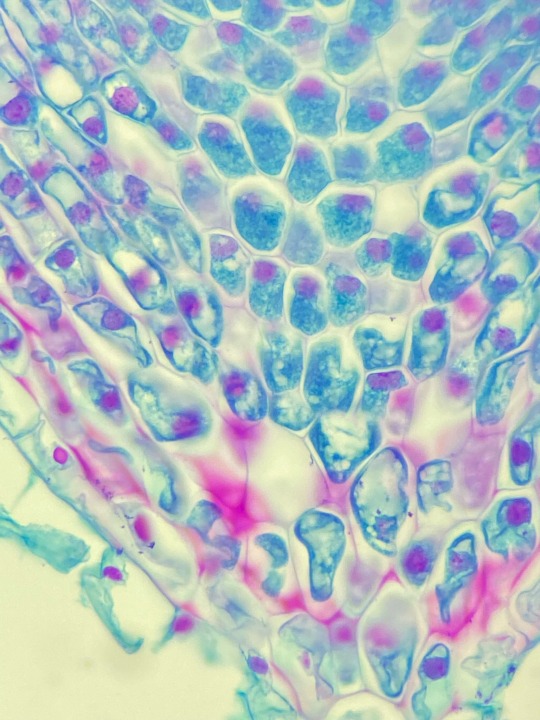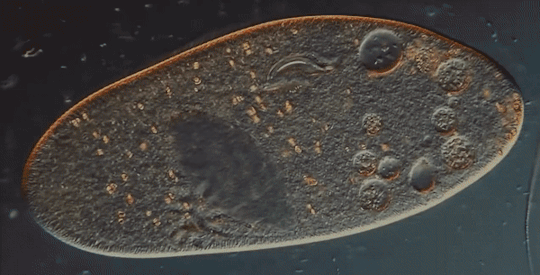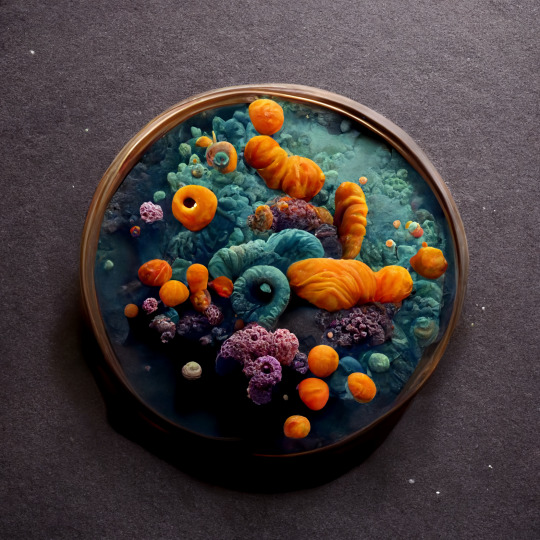#organelles
Text







Cells cells they’re made of organelles
(Onion leaf tops dyed blue for viewing)
126 notes
·
View notes
Text

Paramecium Caudatum showing nucleus, organelles, contractile vacuole complex, food vacuoles & oral groove
#nature#photography#science#education#adorable#explore#funny#Paramecium Caudatum#protozoa#cell#unicellular#nucleus#organelles#vacuoles#animal cell#gif#gifs#biology#awesome#beautiful#beauty
30 notes
·
View notes
Text

Vital for Immunity
Importance of peroxisomes – organelles inside cells that are involved in lipid metabolism – for immune cell development and immune responses revealed by defects seen in a peroxisome-deficient mouse model of the congenital disorder Zellweger disease
Read the published research article here
Image from work by Brendon D. Parsons and Daniel Medina-Luna, and colleagues
University of Alberta, Department of Laboratory Medicine and Pathology, Edmonton, AB, Canada
Image originally published with a Creative Commons Attribution – NonCommercial – NoDerivs (CC BY-NC-ND 4.0)
Published in Cell Reports, February 2024
You can also follow BPoD on Instagram, Twitter and Facebook
#science#biomedicine#immunofluorescence#biology#congenital disorders#zellweger disease#peroxisomes#organelles#cells#immunity
15 notes
·
View notes
Text
Updated research on small cellular machine called TRiC controls the folding of tubulin, a human protein that is the foundation of microtubules.
This challenges the previous understanding that TRiC and other machines like it, known as chaperonins, only passively create a favorable environment for folding but do not actively take part in it.
Many of the proteins that fold with the aid of TRiC are intimately linked to human diseases, including certain cancers and neurodegenerative disorders like Parkinson’s, Huntington’s, and Alzheimer’s diseases.
3 notes
·
View notes
Text
Socialism is like biology, right?
Oh my fucking god, in seventh grade, I compared the organelles of the cell to the social workings of the Communist Party under Stalin. And drew a whole comic strip about it.
And I lost most of it.
*facepalm*
Although to be quite honest, I'd totally date me knowing this.
8 notes
·
View notes
Text








Hehehe, long time no posting friends
Here is my part of a biology project teehee
(If my bio partners find this, erm hi)
#my art#digital art#organelles#you see that mitochondria?#hes the powerhouse of all your cells#your powered by a bunch of little bugs man#school project
2 notes
·
View notes
Text

#studyblr#notes#medblr#medical notes#med notes#biology#biology notes#bio#bio notes#levels of organization#biological levels of organization#levels of biological organization#organs#organ systems#cells#tissues#organelles#molecules#atoms#organisms#biochemistry#organization
5 notes
·
View notes
Text
All of the above motors have separate head, neck, and tail domains, as does myosin XI (Figure 1.27). (...) The tail domain usually contains coiled-coil regions for dimerization, and the end of the globular tail domain binds to specific organelles or "cargo" and is called the cargo domain (see Figure 1.27B). (...) The two heads of the dimer then alternately bind to the cytoskeleton and "walk" forward while the neck flexes as ATP is hydrolyzed (see Figure 1.27C).

"Plant Physiology and Development" int'l 6e - Taiz, L., Zeiger, E., Møller, I.M., Murphy, A.
#book quotes#plant physiology and development#nonfiction#textbook#myosin#coil#dimerization#organelles#cargo#cytoskeleton#atp#hydrolyzed
3 notes
·
View notes
Text
My absolutely favorite AI rendering. "Microbiology terrarium".
I want to try and replicate these in resin art.





3 notes
·
View notes
Text
An Organelle Dating Sim? Maybe.
“The annual protein building competition is just around the corner and you have been recruited by your school’s biology club to help them win! But, while they initially seemed like a well-oiled machine, you quickly realized that there are many cracks beneath the club’s pristine surface. Will you be able to discover the root of the problem? And will you be able to resolve it before the competition? Or has the damage already been done?”
Intro
Hello! My name is Veevz and I’m currently trying to work on a dating sim based off the organelles.
I originally got this idea from my AP Biology final project, where I made this little roleplay game that taught you the basic functions of most organelles... And now I want to make it a full fledged game.
I’m not really sure on how development would go, because I’m going to start college soon and things might get busy after a while. But I’ll most likely be passively working on it as I truely want to make this a thing.
About the "Organelles and Me"
So basically what I have planned is that you, the player, will get to learn about each organelle in detail through the conflicts they have with each other.
Disclaimer: in real life, organelles should not have conflicts with each other, we would all be dead if that were the case.
The game is going to be split into roughly 5 chapters, with 3 designated to the organelles' conflicts and such.
This is my current outline:
Chapter 1/Prologue: Intro to basic functions of organelles.
Chapter 2: Smooth ER, Rough ER, and Golgi Body (endomembrane system, nucleus and ribosome have to be involved, but they have a separate chapter.)
Chapter 3: Plasma Membrane, Mitochondria, and Chloroplast (endosymbiotic theory)
Chapter 4: Nucleus and Ribosome (RNA world hypothesis)
Chapter 5: Protein building competition (probably has minigames players can participate in if I can figure out how to code them)
In the end, the player will hang out with the organelle they have the most heart points with, and in the end the organelle will confess their love to the player.
That's really all I have for now lol.
#dating sim#visual novel#vndev#biology#organelles#I'm sorry i literally have no idea how to tag this
4 notes
·
View notes
Text
"it's has a different genome!!"
"the father also contributed DNA!!!"
Okay. However, the person with the uterus, supplies two sets of genomes, theirs and a mitochondria, remember power house of the cell? Humans can't survive without mitochondria. The parent with the uterus, also provides the bulk cellular machinery aka basic organelles to kick start division. And then there's also parental antibodies, feeding, borrowing the function of the parental bodily systems, and then have to be the person to carry it for 9 months then labor.
So...that argument is like saying the sperm donor have a higher say because they contributed $1 to a $10million or even more fund and the carrying parent contributed the rest, plus services and labor.
That would be weird right? The $1 donor having more say or recognition?
Fun fact, the egg is 10 million times the volume of a sperm, 20x the size, but it's what's inside that counts. Right?
5 notes
·
View notes
Text
wow. A scientific fact mentioned in several of my books is no longer true. Also, all biology / biochemistry textbooks need to be updated ...
0 notes
Text
Amoeba hunts and kills paramecia by phagocytosis
#nature#photography#science#education#adorable#explore#funny#Paramecium Caudatum#protozoa#cell#unicellular#nucleus#organelles#vacuoles#animal cell#gif#gifs#biology#awesome#beautiful#beauty#amoeba#phagocytose
16 notes
·
View notes
Text
Contact Details
Like the organs in our bodies, cells have their organelles each performing a specific function. Using 3D electron microscopy with high-speed molecular tracking, this study reveals nanoscale details of communication by molecular exchange at the contact site of two organelles – endoplasmic reticulum and mitochondria
Read the published research article here
Video from work by Christopher J. Obara and Jonathon Nixon-Abell, and colleagues
Janelia Research Campus, Howard Hughes Medical Institute, Ashburn, VA, USA
Video originally published with a Creative Commons Attribution 4.0 International (CC BY 4.0)
Published in Nature, January 2024
You can also follow BPoD on Instagram, Twitter and Facebook
6 notes
·
View notes
Text

KOMÓRKI I TKANKI cz. 1/9
OGÓLNA BUDOWA KOMÓRKI
Komórka to podstawowa jednostka budowy organizmu człowieka. Bardziej złożone struktury (tkanki i narządy) są zbiorem komórek i ich produktów. Aktywność komórek gwarantuje procesy życiowe. Czy wiesz, jakie procesy życiowe przebiegają w dziesięciu bilionach komórek twojego ciała?
Organelle komórkowe to małe struktury znajdujące się w cytoplazmie, oddzielone od otoczenia błoną komórkową i pełniące określone funkcje. Należą do nich jądro komórkowe, mitochondria i tak dalej.
Błona komórkowa: białkowo - lipidowa selektywna błona otaczająca komórkę. Jest strukturą zewnętrzną, przez którą odbywa się transport substancji do i z komórki; w przypadku leukocytów (krwinek białych) funkcję transportową pełnią nibynóżki.
Otoczka jądrowa: podwójna błona białkowo-lipidowa oddzielająca zawartość jądra komórkowego od cytoplazmy; uczestniczy w przekazywaniu cząsteczek między jądrem a cytoplazmą.
Nukleoplazma (kariolimfa): substancja wypełniająca jądro komórkowe. Zawiera chromatynę i RNA.
Jąderko : element jądra komórkowego odpowiedzialny za powstawanie rybosomowego kwasu rybonukleinowego (rRNA), który przenika do cytoplazmy i bierze udział w syntezie białek.
Cytoplazma : zawartość komórki otoczona błoną komórkową (poza jądrem komórkowym). W cytoplazmie znajdują się organelle komórkowe i ciałka jądrowe (pozbawione błony komórkowej, zagęszczone skupiska białek, glikogenu i barwników).
Retikulum endoplazmatyczne, ER (siateczka wewnątrzplazmatyczna) : rozgałęziony system kanalików zbudowanych z błon plazmatycznych, który może być pokryty rybosomami (ER szorstkie) lub nie (ER gładkie). ER gładkie stanowi znaczną część cytoplazmy w komórkach syntezujących steroidy (lipidy), na przykład w komórkach wątroby. Gromadzi i uwalnia jony wapnia w mięśniach.
Rybosomy : kompleksy białek, w których zachodzi synteza białek, a mRNA (matrycowy lub informacyjny RNA) przekazuje informacje genetyczną do sekwencji aminokwasów.
Aparat Golgiego: wyłożona błoną organella składająca się ze spłaszczonych cystern oraz oddzielajacych się pęcherzyków. Aparat Golgiego modyfikuje, magazynuje i transportuje produkty ER do błon komórkowych oraz innych organelli.
Mitochondrium: podłużna struktura otoczona błoną; błona wewnętrzna wygląda jak labirynt (powierzchnia tego labiryntu tworzy tak zwane grzebienie mitochondrialne) i jest miejscem zachodzenia złożonych reakcji biochemicznych między tlenem a produktami metabolizmu komórkowego. Głównym zadaniem mitochondrium jest dostarczanie energii potrzebnej komorkom do funkcjonowania.
Wakuola (wodniczka): organella otoczona błoną, pełni funkcję transportową. Wakuole mogą się łączyć ze sobą albo z innymi strukturami, w których skład wchodzi błona (na przykład błona komórkowa lub lizosomy)
Lizosomy - niewielkie pęcherzyki otoczone błoną białkowo - lipidową zawierające enzymy hydrolityczne, które rozkładają mikroorganizmy i zniszczone części komórek, a także pozyskują z nich składniki odżywcze.
Centriole - filamenty mikrotubulowe, czyli wiązki mikrotubul (włóknistych rurek) ułożonych w kształcie pierścienia, znajdujące się w pobliżu jądra komórkowego i tworzące centrosom, czyli ciało środkowe. Występują w parach i są ułożone do siebie prostopadle. Centriole wrzeciona kariokinetycznego odgrywają ważną rolę w przemieszczaniu chromosomów (a dokładniej chromatyd, czyli połówek chromosomów) podczas podziałów komórkowych.
Mikrotubule - część cytoszkieletu. Mikrotubule wyrastają z centrosomu, nadają kształt komórce, biorą udział w transporcie międzykomórkowym oraz stanowią strukturalne i napędowe wsparcie dla organelli.
Mikrofilamenty - cienkie włókna aktynowe odpowiedzialne za zmianę kształtu komórki, fałdowanie i uwypuklenia błony cytoplazmatycznej w trakcie endo- i egzocytozy (wchłaniania i uwalniania substancji) oraz tworzenie nibynóżek.
0 notes
Text
Scientists have long understood that organelles evolved to have certain shapes & sizes because their forms are closely related to how they function.
Now, researchers developed a bacteria-based tool to test whether form follows function.
0 notes